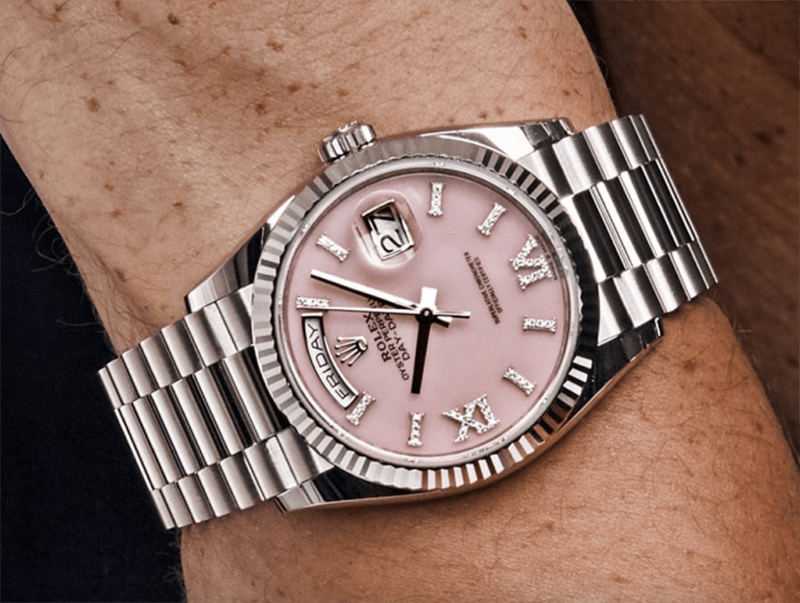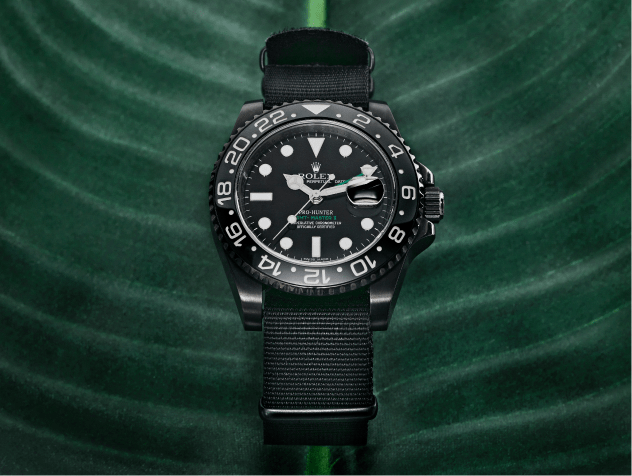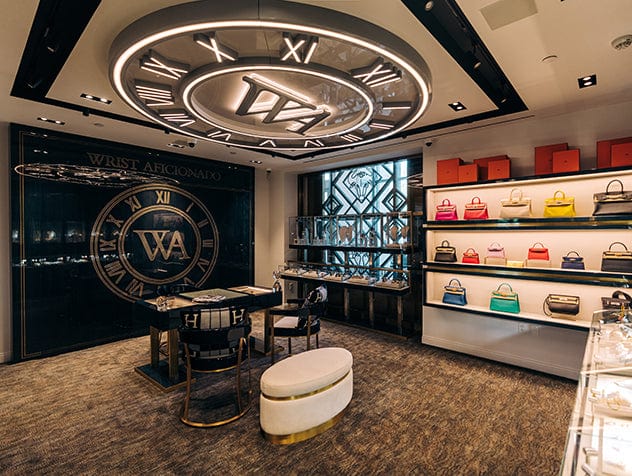Congratulations, you’re ready to get engaged. A lifetime of marital bliss is on the horizon and the greatest chapter of your love story is about to begin. Now what?
For many couples, the first step toward decades of happiness involves one of the most important purchases they will ever make — an engagement ring.
Engagement rings as a tradition date back centuries. According to historians, ancient Romans wore rings made of materials like iron, flint, bronze, and bone, to signify their unions, or even to mark business deals. By 200 B.C.E., there is evidence of such rings crafted in gold.
In 850 C.E. Pope Nicholas I declared that men should give the woman they intended to marry a betrothal ring. Over the following centuries, the materials used to make engagement rings vacillated, but the tradition continued.
In the late 1800s, diamonds were discovered in South Africa, greatly increasing worldwide supply and availability. Diamond companies like De Beers expertly marketed the stones to the public in campaigns like “A Diamond Is Forever.”

The famous tagline is still considered one of the advertising industry’s most iconic. By the mid-19th century, diamond engagement rings had taken hold of couples’ imaginations as the ultimate declaration of love.
While some couples opt for a colored gemstone engagement ring (take Princess Diana’s sapphire engagement ring, which is now Princess Catherine’s sapphire engagement ring as the most famous example) diamonds undeniably reign supreme in the wedding market.
Many people are attracted to the stone’s incredible brilliance and sparkle, which has been amplified through modern cutting techniques. More importantly, diamonds are the gemstone best suited to daily wear. Earning a 10 on the Mohs scale of hardness, diamonds are uniquely structured to withstand daily stressors. Softer gems, like emeralds, for example, which rank at a 7.5-8 on the Mohs scale, are more likely to crack and chip.

The practical aspect of wearing a diamond combined with the stone’s undeniable beauty makes diamonds the top choice for couples designing their engagement rings today.
So, how exactly does a couple go about buying a diamond engagement ring?
This is when it’s time to turn to an expert. Crafting the ring of your dreams entails a seven-step process consisting of choosing a diamond shape, choosing a ring setting, selecting the perfect diamond for a client’s budget, approving a rendering, printing the model and casting the ring in metal, setting the stone or stones in the ring, and polishing it.
Below, we break down the process.
Step 1: Select a diamond shape.
At Jewels Aficionado by Wrist Aficionado, we keep an occasional diamond engagement ring in stock, but 99 percent of the time your ring will be a custom design project.
The custom design process is far less daunting than it may sound and far more personal and luxurious than purchasing a ring out of a showcase.

By nature, every diamond is slightly unique, and therefore one-of-a-kind. At Jewels Aficionado we will source the diamond that matches your preferences and tailor the overall ring design around it. Just like the diamond itself, your engagement ring will ultimately be as unique as your relationship, personalized to your exact specifications.
The starting point to crafting the engagement ring of your dreams is to settle on the diamond shape.
Do you favor a round brilliant-cut diamond, the most popular diamond shape?
Or are you attracted to an oval diamond, which is currently enjoying heightened popularity? Does the elongated shape of a marquise diamond speak to you, or the rounded edges of a classic cushion-cut diamond?
Perhaps you lean toward clean lines, and would like the sharp angles of a princess-cut or radiant-cut diamond. You also can’t go wrong with the bold and timeless style of an emerald-cut diamond.

Pear-shaped diamonds are another popular choice, with their mix of soft and sharp angles.
There are more unique shapes too, like heart-shaped diamonds. Clients can opt for a colored diamond–such as a champagne- or pink-colored diamond–or even a colored gemstone center stone.
The diamond or center stone shape is a major aspect of any ring’s personality and feel, so it’s the perfect starting off point for your design. For clients who are undecided, we often share pictures at this stage so they can get a sense of the different shapes and how they look as a finished product.
Step 2. Decide on a Ring Setting.
With a diamond shape in mind, now we can begin to imagine the setting. While the topic is expansive enough to warrant its own article, of all the ring setting options, a few styles are the most popular.

A diamond solitaire is the perennial engagement ring favorite for good reason. Typically consisting of a prong-set diamond on a plain gold or platinum band, the style is minimal and timeless, seamlessly integrating with the individual’s personal style.
A solitaire avoids any overt trends, meaning you’re less likely to tire of the style. The focus of a solitaire is undoubtedly the diamond.
There are many ways to adjust a diamond solitaire ring to suit an individual’s tastes.

For fans of lots of bling and sparkle, opt for a band set with diamond pavé. A diamond halo setting also boosts the bling, by surrounding your center stone with a thin row of diamond pavé or larger diamond for an antique “cluster” effect.
For those who favor clean lines and the look of metal, try a bezel setting in which the diamond is encased in a thin “cradle” of gold or platinum.
Another of the most popular ring settings is a three-stone setting, which typically features the largest stone as the center stone, with two smaller stones matching in size flanking it on either side.

This is a popular option for color lovers who choose a sapphire or ruby as their engagement ring center stone. A colored gemstone is perfectly accented with diamond side stones.
Versions with all diamonds are also a classic rendition. The three diamonds can be the same shape or the side stones can be a different shape than the center stone. The combinations are truly endless.
While Steps 1 and 2 in the engagement ring design process can be swapped in order, it’s important to have an idea of the stones and setting you want before Step 3.
Step 3: Factor in the Budget.
Once you have decided on your diamond shape and the overall style of your ring, it’s time to bring your vision to reality.
To begin your design, we will now select your stones. Diamonds have several characteristics that influence their price. Diamonds are more expensive when they are larger, clearer, and devoid of color.
How does one confirm a diamond’s characteristics? Any stone in an engagement ring from Jewels Aficionado will feature a report from a reputable gemological laboratory, showing the diamond’s carat weight, clarity, color, and even the grade of its cut, or shape.

Having documentation from an unbiased lab, rather than from a diamond dealer or jewelry seller, allows clients to feel confident in their purchase and should be non-negotiable when making an engagement ring with any jewelry company. At Jewels Aficionado, we provide gemological documentation to our customers for them to keep.
It is at this stage of selecting the diamond that we will consider the ring budget with our clients. We will discuss which attributes are most important to you–say the size of the diamond, for instance–and source the best diamonds that meet your requirements within your budget.
This is where our jewelry knowledge really comes into play. For example, if you are looking for an emerald-cut diamond and care more about carat size than clarity, we can educate you on emerald-cut diamonds and how that cut shows inclusions more than many other diamond cuts, meaning clarity should not be sacrificed.
For this hypothetical purchase, we may recommend an elongated cushion-cut diamond or a radiant-cut diamond that is more forgiving in terms of inclusions. That way we can source a stone that is your desired size but lower in clarity, therefore fitting within the budget confines.
With each stone we will help you find the balance between size, clarity, and color. Whether in-person or via messages, videos, and video calls, we will show you diamond options based on our recommendations and your taste. You will have the final say as you decide which diamond speaks to you the most.

4. Making a Rendering.
Once the diamond or multiple diamonds and colored gemstones are selected, it’s time to transform the stones into jewelry.
We will scan the stone or stones so our team can use the exact diamond dimensions to build the ring around it. At this stage we will also utilize your fiance-to-be's ring size to achieve the perfect proportions.
Once the design has been digitally rendered, we will send you an image for approval.
5. Casting the Ring in Metal.
At this step, the digital rendering will be printed into a physical model, which is then cast in gold or platinum.
18-karat yellow gold, 18-karat white gold, and platinum are the most popular engagement ring choices. While metal prices vary, gold has overtaken platinum in price in recent year, costing more than double at the time of this writing. Either is an excellent, durable choice.

For those who love warm tones, yellow gold is an easy winner among the choices. For fans of cool tones, the choice between platinum and white gold will come down to personal preference or cost. As with the rest of this process, Jewels Aficionado can help you decide on the best option for you.
6. Set the Stones.
Now that the ring has been cast, we have a metal ring and a loose diamond. It’s time to put the two together.
Expert stone setters will set your diamond into the ring by hand.

7. Polish.
Next, an artisan will polish the ring, transforming the piece from a rough, but beautiful, work of art into its final form.
Take advantage of our insured, next-day delivery to receive your ring wherever you are. It will come in one of our signature, luxurious ring boxes with a copy of the stone or stones’ laboratory certificates, which we recommend you store with your important documents.
By the end of the engagement ring making process, several jewelers’ and craftspeople’s knowledge have contributed to realize your vision. The finished engagement ring is unique and personal to you and the other half of your couple.
For engagement ring inquiries, please contact ashley@jewelsaficionado.com to discuss options and ideas, or to schedule an in-person or remote appointment.











